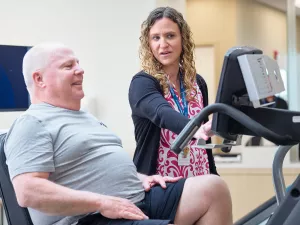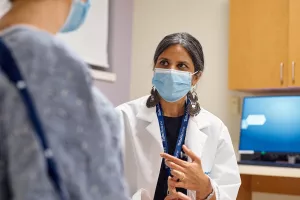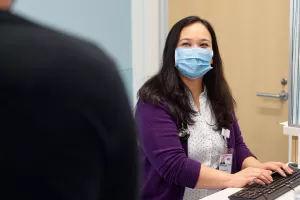Cardiac rehabilitation focuses on healing your physical and emotional health following a heart attack or heart surgery. Through exercises and education, it can also improve the overall quality of life for people with a chronic heart condition like angina or coronary artery disease. With the support of dietitians, counselors and physical therapists, we can offer people a new beat on life.
Giving your heart the strength it needs
Your heart is an organ that's mostly made of muscle. Living a heart-healthy lifestyle takes time, practice and dedication — the same way you'd exercise other muscles like biceps or abs. This is especially true if you're living with a condition that takes a toll on your heart health.
With cardiac rehabilitation, our team of experts provide skills and guidance to help get your heart health back on track. That means performing stretches and exercises you'd experience with physical therapy. We also lend a helping hand on making lifestyle changes — stopping tobacco use, eating a healthy diet and managing stress — your new normal.

Conditions
Your cardiologist may recommend cardiac rehabilitation to help you recover from heart surgery or conditions like:
Treatments
We bring together the brightest minds in heart health to create and manage your cardiac rehabilitation program. Your team may include:
- Behavioral health specialists
- Cardiac rehabilitation nurses
- Cardiologists
- Diabetes educators
- Dietitians
- Exercise physiologists
- Physical therapists
Together, we’ll create a plan that’s suited to your specific condition and health goals. Your plan will include some combination of the following:
- Counseling services
- Exercise
- Nutritional education

From regular office visits to inpatient stays, find the healthcare you need and deserve close to home.

Meet the doctors and care team devoted to supporting you every step of the way along your path to better health.